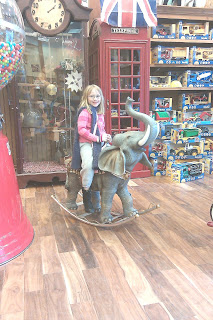I'd like to welcome another author friend from my old college days, Matthew Kirby. I am so happy for his success. Check out his blog and website to find out the other projects he's got in the works!
Tell me about your book and what types of readers would relate to it.
THE CLOCKWORK THREE is an adventure story with hints of mystery, history, and fantasy. It tells the story of three children during the late 19th century whose lives are brought together by an enchanted violin, a hidden treasure, and a clockwork man that comes to life. I wrote it for middle grade readers (ages 8 to 12) but I've had teens and adults tell me they enjoyed it as well. I tried to include a little something for everyone.
Do you feel that educators make the best authors? Why or why not?
Interesting question. I haven't ever stopped to think about that. I certainly don't think being an educator hurts! But I don't know that being an educator is a guarantee, either. I know amazing writers who are educators, and equally amazing writers who aren't, so it's hard for me to say that educators make the best authors. An advantage educators might have is an awareness of what resonates with kids today, and what gaps might exist in the market, just waiting for the right story to fill them in. That kind of thing.
What has surprised you about the publishing world?
People often ask me how it feels to be a published author. Before being published, it's a question I might also have asked, and I would have assumed that it would feel different somehow. But surprisingly, I feel about the same now as I did before I got published. Of course, I feel very grateful, and surprised, and amazed, but I also still have the same fears and insecurities about my writing that I always have. I wonder if the book I'm working on is good enough for my publisher and good enough for my readers. I actually asked a lot of my writer friends if they experience the same thing, and all of them do. The business of writing has changed for me since getting published, but the act and craft of writing really hasn't.
Which authors do you know well? What's your favorite childrens books?
I'm lucky to know and be good friends with several authors here in Utah. We have a thriving and incredibly supportive community of children's writers, and that's a wonderful thing.
As far as my favorite children's books, I really dislike this question, because it's simply impossible to choose. I love so many! The book that made me want to be a writer was Ursula K. Le Guin's A WIZARD OF EARTHSEA. I read it when I was 12 or 13, and it was a magical, powerful experience, and I knew I wanted to do what Mrs. Le Guin was doing.
Describe your writing regime.
During the school year when I'm working, I typically write from about 7 to 9 PM on weeknights. Hopefully more on the weekends. During the summer when school's not in session, I try and write a lot more, anywhere from four to eight hours a day. I'm fortunate that I can write pretty much anywhere, as long as I have a laptop. I wrote a pretty big chunk of my next book from a lawn chair in my back yard.
Do you feel that using an agent is helpful rather than going the slush pile route?
In my experience, yes, an agent is extremely helpful. They know the market, can keep track of who's acquiring what, and open lots of doors that might otherwise be closed to the aspiring writer. For example, my editor was not someone I knew of or would have thought to submit to if I was trying to break in through the slush pile. I have to admit she wasn't on my radar at all. But my agent had met her and heard her speak about her tastes, and he knew she would like my book. He was right, and she acquired THE CLOCKWORK THREE before she'd even had the manuscript for a week. Her enthusiasm and support were and are invaluable to me, and we have since developed an amazing working relationship. My book landed at the perfect home, and my agent is the one who found it.
What have you had to do to help market your book so far?
Well, in terms of social media, I blog. I've done several book signings, and I go out and do school visits. But mostly I've just made myself available and willing for whatever Scholastic has asked of me. I'm very fortunate in that they have supported THE CLOCKWORK THREE with a book trailer, a website, and sending me to ALA and a few other events to promote the book.
Advice for teachers who want to be authors?
I think my advice would be mostly the same as for anyone who wants to be a writer. Read everything you can. Write regularly. Submit. And a good critique group is a wonderful thing if you can find one that works for you. I think if I were to think of something unique to educators, it would be to treat your writing time as sacred. Carve out whatever time you can, and guard it jealously. I know first-hand how much time and energy the profession can take if we allow it to, but its important to find balance, even during the school year.



































